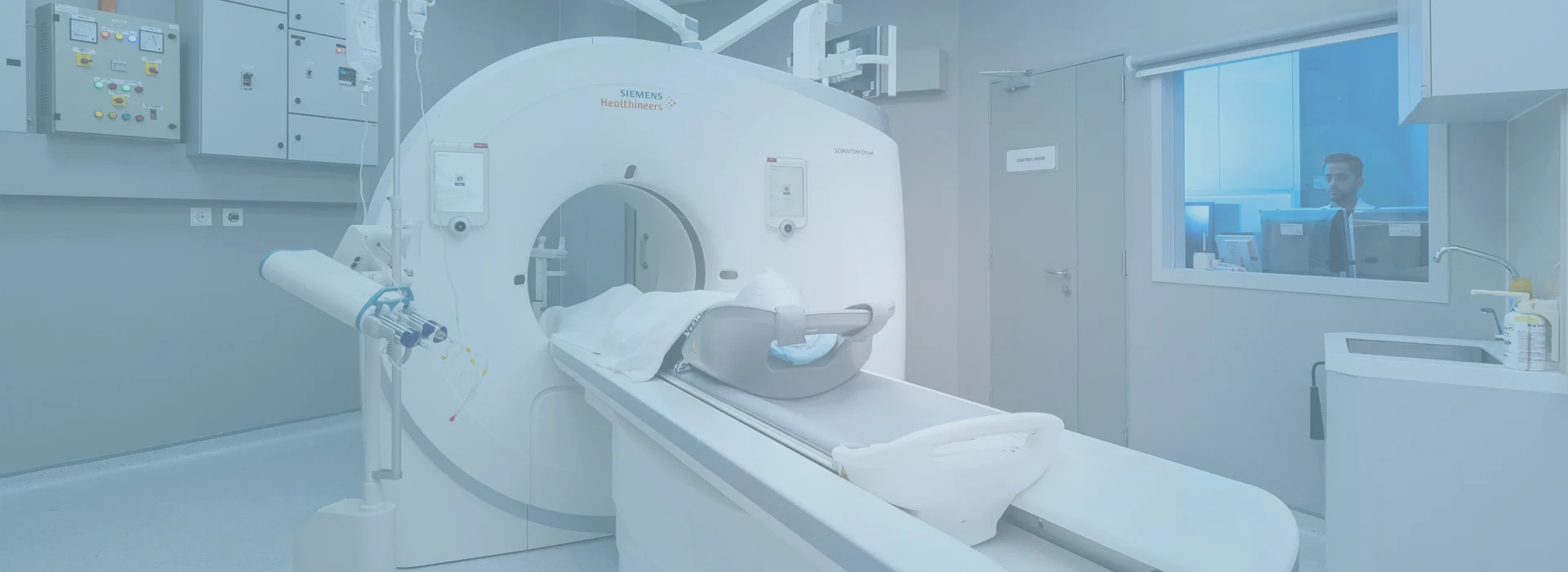
29 Feb 8 Essential Health Screening Tests for Women
8 Essential Health Screening Tests for Women
By Island Hospital | Feb 29, 2024 2:22:51 PM
Celebrating the remarkable achievements of women transcends beyond International Women’s Day, as we recognize their contributions every day.
Today, let’s shine a light on the distinctive health needs of women and explore the essential measures we can take to meet them effectively.
Health screening tests help detect and address potential health issues at an early stage.
Regular health screenings are vital for maintaining overall well-being and addressing health issues before they escalate.
Essential health screening tests for women range from Pap smears and mammograms to blood tests and bone density tests.
These tests provide valuable insight into women’s overall health and enable them to make well-informed decisions regarding intervention and treatment.
1. Pap Smear/Pap Test (Cervical Cancer Screening)
Pap smears are tests to check for cervical cancer. The Pap smear may be taken with the HPV test. Pap smears look for cell changes on the cervix that may become cervical cancer.
Similarly, HPV tests look for the Human Papillomavirus (HPV) virus that can cause cell changes which may potentially lead to cervical cancer.
Who needs to get a Pap smear?
Women who are 21 years old and above are advised to begin screening, regardless of sexual history.
Women who are at greater risk for cervical cancer, such as those with weak immune systems, may need more screenings.
However, women aged 65 years and above with a history of normal pap smear results may no longer need to take this test.
How often do I get a Pap smear?
The frequency varies from individual to individual. Here is a general guideline:
- Less than 21 years old: Not needed.
- 21-29: Every 3 years.
- 30-65: Pap smear and HPV testing every 5 years (recommended) or Pap smear test alone every 3 years or HPV test alone every five years*.
- 65 and above: May stop Pap smear tests if they have not received abnormal Pap smear results and are not at high risk for cervical cancer. Consult your doctor to determine your next step.
*Taking only an HPV test is generally not recommended.
What happens during the procedure?
The procedure usually takes a few minutes, and you may experience some discomfort.
You will lie on your back on an exam table with your legs spread and your heels in stirrups.
The doctor will insert a lubricated plastic or metal instrument called the speculum into the vagina to widen it to look at the cervix.
The doctor will use a cotton swab or cervical brush to gently swab the lower and inner parts of the cervix.
The cells collected will be placed in a liquid that preserves the sample and sent to the laboratory for evaluation.
*Note: It is normal to have minor vaginal bleeding after the procedure. However, if you experience excessive bleeding, consult your doctor immediately.
Tips to prepare for a Pap smear
To ensure the test results are accurate: avoid intercourse, douching and using tampons, vaginal medicines, or spermicidal foam for 2 to 3 days before the test.
If you had sex before the test, inform the doctor during your appointment.
A heavy period flow may affect the test results. Consult your doctor to discuss your options.
What do my test results mean?
Normal Pap smear: No cell changes were found on your cervix. This means there are no signs of cervical cancer. However, you are encouraged to continue getting regular Pap smears.
Abnormal Pap smear: Cell changes were found on your cervix. This result does not necessarily mean that you have cervical cancer. Further tests will be needed to be certain.
Unclear Pap smear: Cervical cells look like they could be abnormal. It is unclear whether it’s related to HPV. It could be connected to other factors such as pregnancy, menopause, or an infection. Consult your doctor for the next step.
2. Mammogram (Breast Cancer Screening)
A mammogram is an X-ray of the breast. Mammograms can be used to check for breast cancer in women who have or do not have symptoms of the disease.
Who needs to get a mammogram?
It is advisable to have the screening once every year. However, if you are at higher risk for breast cancer, you may need more frequent checkups.
How often do I get a mammogram?
Women are advised to begin screening at 40 years old.
Women who have an increased risk due to family history, genetics, tendency, or past breast cancer, may consider starting mammogram screening earlier, having additional tests or having more frequent exams.
What happens during the procedure?
- You will stand in front of a special X-ray machine.
- A technologist will place your breast on a plastic plate. Another plate will gently press your breast from above.
- The plates will flatten the breast, keeping it still while the X-ray is taken.
- The steps will be repeated to get a side view of the breast.
- The same method will be used to X-ray the other breast.
- The technologist will check whether the X-rays are clear or need to be retaken.
- If you feel uncomfortable, do inform the technologist. The hospital staff will try their best to accommodate your needs.
Tips to prepare for a mammogram
For your comfort, wear skirts or pants as this test will require you to undress from the waist up.
On the test day, avoid wearing deodorant, perfume, or powder as these products may affect the X-ray results.
Avoid having your mammogram the week before or during your period, as your breasts may be tender or swollen.
What do my test results mean?
Normal results: Nothing abnormal was found. Continue to get mammograms once a year, or according to your doctor’s recommendations. Mammograms work best when they can be compared with previous ones to identify changes in your breasts.
Abnormal results: This does not necessarily mean that there is cancer. But you will need to have additional mammograms, tests or exams before the doctor can be certain.
You may also be referred to experts in diagnosing breast problems such as a breast specialist or surgeon.
3. Blood Tests
Blood tests involve taking a small sample of your blood for testing. They are used to detect a variety of health conditions such as anaemia, diabetes, and liver diseases.
What are the types of blood tests?
Here are a few common types of blood tests:
Complete blood count (CBC): It measures the size, number, and maturity of the different blood cells in a particular volume of blood. For example, red blood cells, white blood cells, and platelets. This test can detect anaemia, fatigue, rheumatic diseases, and blood infections.
Basic metabolic panel (BMP): These tests measure certain substances in your blood, such as glucose, calcium, electrolytes, blood urea nitrogen (BUN) and creatinine. These tests can detect kidney disease, breathing problems, and diabetes-related complications.
Lipoprotein panel: It measures the level of different types of fat in your blood. This includes total cholesterol, LDL (bad) cholesterol, HDL (good) cholesterol, triglycerides, and more.
What happens during the test?
This test may take between 5 to 10 minutes.
- An elastic band called a tourniquet may be wrapped around your arm.
- A healthcare professional will use a needle to extract a small amount of blood from the inside of your elbow.
- A small plaster or cotton wool will be used to cover the puncture area.
- Your blood will be collected in a tube and sent to a laboratory for evaluation.
- You may experience temporary bruising or swelling around that area, which should only last several days.
Tips to prepare for a blood test
- Before the test, avoid eating or drinking anything other than water.
- Before the test, stop taking certain medicines which may affect the test results such as anticoagulant medicines. Consult your doctor for more information.
4. Blood Pressure Test
A blood pressure test checks if your blood pressure is normal, low or high. Low blood pressure may cause you to feel lightheaded, dizzy or faint.
More critically, high blood pressure or hypertension may increase your risk of developing serious conditions such as heart disease, heart attacks, strokes, and chronic kidney disease.
Therefore, it’s important to regularly test your blood pressure as you age. These tests can be taken at home or with the help of a healthcare professional.
How often should I check my blood pressure?
As this varies among individuals, consult your doctor on how often to measure your blood pressure.
Individuals with hypertension may need to check their blood pressure as frequently as once every 24 hours.
What happens during the test?
The procedure is quick, painless and will only take a few minutes.
- The cuff of the blood pressure machine is wrapped around your upper arm.
- The cuff is inflated and it gently tightens around your arm.
- The cuff is equipped with a gauge that will measure your blood pressure.
- The blood pressure reading will appear on the machine immediately.
What do my test results mean?
- Between 90/60mmHg and 120/80mmHg: Normal blood pressure.
- 135/85mmHg and higher: High blood pressure.
- 89/59mmHg or lower: Low blood pressure.
5. Sexually Transmitted Infection (STI) Tests
Sexually transmitted infection (STI) tests are used to detect diseases such as chlamydia, gonorrhoea, and herpes which are spread through sexual contact.
Who needs to take STI test?
Individuals aged 13 to 64 years old need to be tested at least once for HIV. Women younger than 25 years old who are sexually active need to be tested for gonorrhoea and chlamydia every year.
Women aged 25 years old and older who are at increased risk (e.g., multiple sexual partners) need to be tested for gonorrhoea and chlamydia every year.
Pregnant women need to be tested for the following STIs: syphilis, HIV, hepatitis B, and hepatitis C, starting from the early stages of their pregnancy.
Pregnant women at increased risk also need to be tested for chlamydia and gonorrhoea, starting from the early stages of their pregnancy.
What happens during the test?
Blood tests: To diagnose syphilis, HIV, and herpes. A healthcare professional will use a small needle to extract a blood sample from your arm.
Urine tests: To diagnose trichomoniasis and gonorrhoea. You will provide a sterile sample of urine as requested by your healthcare provider.
Swab tests: To diagnose HPV, chlamydia, gonorrhoea, and herpes. A healthcare provider will use a special swab to take a sample from the vagina or cervix.
Lumbar puncture / Spinal tap: To diagnose an advanced stage of syphilis or a herpes infection that has affected the brain or spinal cord. A healthcare provider will inject an anaesthetic into your back, followed by a thin, hollow needle into your lower spine. A small amount of fluid will be extracted for testing.
Urinalysis (Urine Analysis)
A urinalysis is a urine test to check for urinary tract infections, kidney problems, or diabetes.
This test is done during regular checkups, or to monitor certain medical conditions and treatments.
What happens during the test?
The doctor will provide a container to collect the urine sample, either at home or at the doctor’s office. The sample will then be sent to the laboratory for evaluation.
The urinalysis includes a three-part examination, namely: the visual exam, the microscopic exam, and the dipstick test. The urinalysis will examine the following factors:
- Colour (pale yellow, dark yellow, or another colour)
- Appearance (clear or cloudy)
- Presence of odour
- pH level
- Specific gravity
- Abnormal substances: blood, or excessive protein, glucose, ketones and bilirubin.
- Cells, urine crystals, urinary casts, and mucus.
- Bacteria or other germs.
Tips to prepare for a urinalysis
- Avoid food such as food dyes which can discolour your urine.
- Inform your doctor of your medication (if any) and if you are on your period.
7. Colorectal (Colon) Cancer Screening
Colorectal cancer screening can find abnormal growths called precancerous polyps to remove them before they turn into cancer.
There are a variety of ways to screen for colorectal cancer. Consult your doctor to determine the best one for you.
Who needs to take a colorectal cancer screening?
Adults aged 45 to 75 should begin regular screening. Those aged 76 to 85 may consult their doctor about screening.
However, those with inflammatory bowel disease or a personal history of colorectal cancer may need to be tested earlier.
How often do I take this test?
The frequency varies on the type of screening. Patients will usually select ONE type which suits their situation best. Here are a few examples:
Faecal immunochemical test (FIT): Once every year.
Colonoscopy: Once every 10 years (for individuals without an increased risk of colorectal cancer).
Computer tomography (CT) colonography: Once every 5 years.
Sigmoidoscopy: Once every 5 years, or once every 10 years with an annual faecal immunochemical test (FIT).
Stool DNA test: Once every three years.
Types of colorectal cancer screening
Colonoscopy: A long, flexible, lighted tube (colonoscope) is used to search for polyps and cancer in the rectum and entire colon. A doctor can remove polyps for examination, which can prevent colorectal cancer.
Computed tomography (CT) colonography: Uses X-rays and computers to create images of the colon which is examined by radiologists for abnormal growths or polyps.
Sigmoidoscopy: A flexible, lighted tube is used to search for polyps, cancer, and other abnormalities in the rectum and lower colon. Although the doctor can remove polyps during this screening test, it is advisable to use a colonoscopy instead to view the whole colon.
Fecal occult blood test (FOBT) and Fecal immunochemical test (FIT): Used to find blood in the faeces, which can be a sign of polyps or cancer.
Stool DNA tests: Analyzes the DNA from a stool sample to look for cancer. The results will determine whether a colonoscopy should be done.
Double contrast barium enema (DCBE): An enema containing barium, which helps make the colon and rectum stand out on X-rays, is given to the patient. A series of X-rays is then taken of the colon and rectum.
8. Bone Density Test (Osteoporosis Screening)
A bone density test helps detect osteoporosis and bone loss or assess the risk for bone fractures.
Women have a higher risk of developing osteoporosis compared to men, as they experience hormone changes that directly impact bone density during the menopause stage.
Who needs to take a bone density test?
Women who are 65 years old and above are advised to take this test.
However, younger women may also need to take this test if they have an increased risk for osteoporosis, such as fracturing a bone after age 50, family history of osteoporosis, history of treatment for breast cancer, early menopause, and more.
How often do I need to take the test?
It is advisable to repeat the test every two to four years.
However, this number varies according to age and bone condition. Consult your doctor to determine the best frequency for you.
What happens during the test?
The most common bone density test is a dual-energy X-ray absorptiometry (DEXA) scan. This procedure is painless and will take between 10 to 20 minutes.
- You will lie on your back on an X-ray table.
- A large scanning arm will be passed over your body to measure bone density.
- As the scanning arm passes over your body, a narrow beam of low-dose X-rays will be passed through the part of your body which is being targeted or examined.
- Through this process, an image of the scanned area will be produced.
Tips to prepare for a bone density test
- Do not consume calcium supplements 24 hours prior to the test.
- If you are or may be pregnant, inform your healthcare provider before the test.
- You will be fully clothed or may need to wear a gown for this procedure.
- Remove all metal items from your body. This includes watches, jewellery, zips, and belt buckles.
What do my test results mean?
The results are reported as a T-score, which compares your bone density with that of a healthy young woman, and a Z-score, which compares your bone density with that of your demographic (same age, sex, and race).
The T-score is usually the more significant result. If the T-score is:
- -1.0 or above: Normal range.
- -1 to -2.5: You may have bone loss (osteopenia).
- Below -2.5: You likely have osteoporosis.
Schedule an Appointment with Island Hospital
Island Hospitals offers a comprehensive range of health screening tests to suit every woman’s unique health requirements.
Our team of healthcare professionals are ready to assist you every step of the way.
We have over 70 full-time specialists across 9 Centres of Excellence, offering a wide range of health-related intervention and treatment services that are supported by cutting-edge medical equipment and technology.
If you’re searching for an all-inclusive experience, we offer a Complete Screening Package for Women. It contains all the essentials: cancer marker tests, Pap smear tests, radiological screening, cardiovascular tests, and more.







